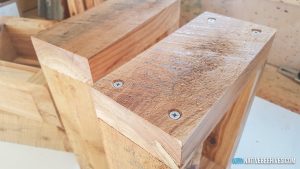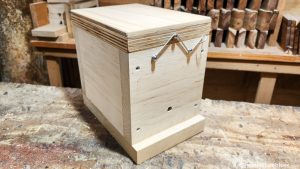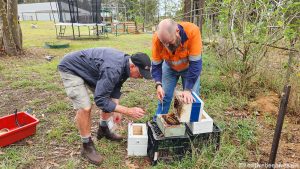
There were bees, honey and pollen, but no brood at all.
The Involucrum are the layers of Propolis surrounding the brood. I peeled back the layers to see there was no brood at all. This means there’s no Queen and the colony would slowly decline and most likely be the victim of pest infestation. It’s also quite possible that your colony could be taken over by another colony of Stingless Bees, which would be a good thing, but don’t rely on that happening.
If you have access to other strong colonies you can remove a few layers of brood from one colony and add it to the declining colony. Hopefully this will add new emerging bees for the new colony but most importantly add brood Queen cells to create a new Queen.
If a new Queen isn’t created, these steps can be repeated multiple times until success.
*It’s also very important to have high bee numbers!
Photo below shows quite a large section of brood being transferred in an attempt to add more bees, though usually only a few layers of brood would be fine.


*Note: These procedures should be carried out calmly and delicately by experienced keepers. If you’re not sure please don’t rush in like a bull at a gate and create a big mess. There is risk of killing both colonies.
Involucrum
This image shows the large area of Involucrum that surrounds the brood. This is multiple layers constructed from Propolis, with air pockets that insulate the brood. This can help the bees regulate the temperature and humidity around the brood. The Involucrum can be built larger in Winter and reduced in Summer, at the same time, the Brood may be smaller in Winter if the colony is in the shade or cooler.











